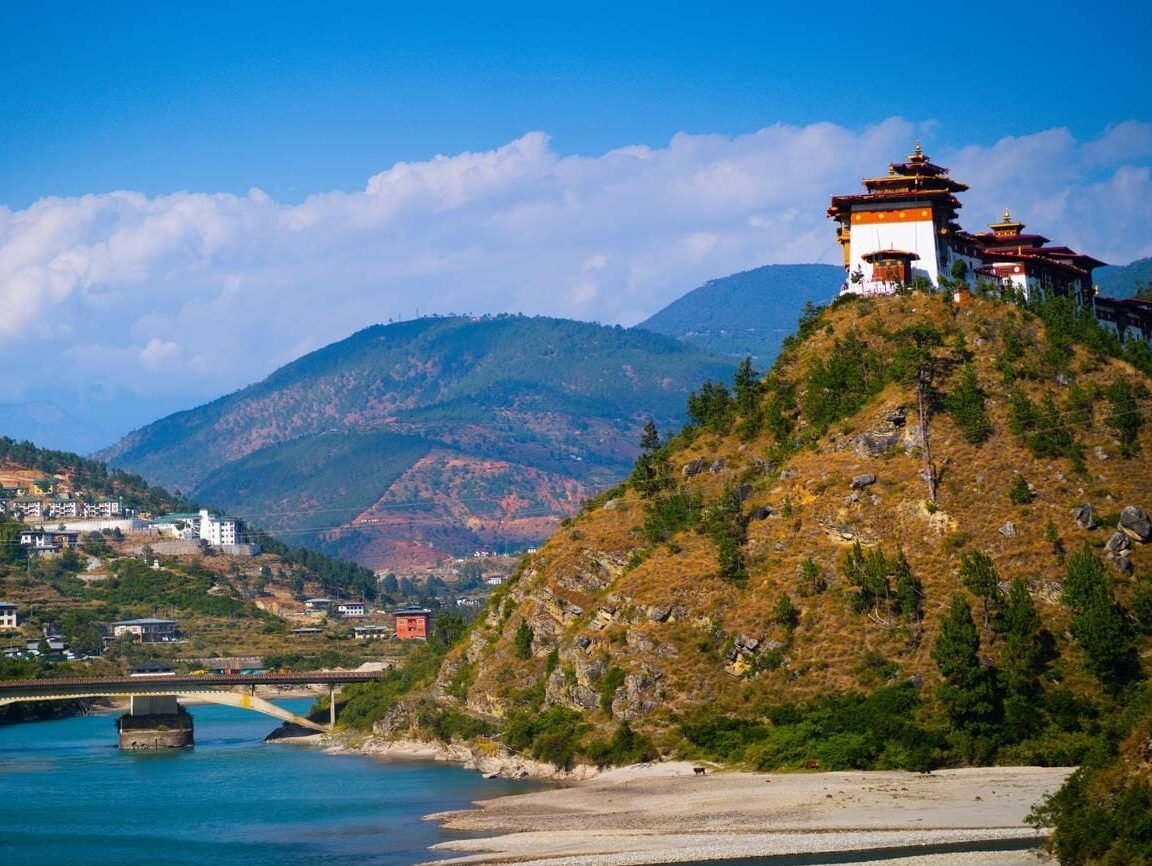Wangdue Phodrang

Wangdue Phodrang
Wangdue Phodrang, often simply referred to as Wangdue, is one of Bhutan’s largest and most picturesque districts, known for its rich cultural heritage, diverse ecosystems, and strategic historical significance. Nestled in the western-central part of Bhutan, Wangdue Phodrang is a destination that encapsulates the essence of Bhutanese culture and natural beauty.
Geographic and Strategic Importance
Wangdue Phodrang is strategically located at the junction of two major rivers, the Puna Tsang Chhu and the Dang Chhu, making it an important center for trade and travel in Bhutan. The district’s varied topography ranges from subtropical lowlands in the south to alpine highlands in the north, encompassing a wide range of climates and ecological zones. This diversity is reflected in the district’s rich biodiversity, which includes forests, wildlife sanctuaries, and agricultural lands.
Historical and Cultural Landmarks
A key historical and cultural landmark in Wangdue Phodrang is the Wangdue Phodrang Dzong, an imposing fortress-monastery built in 1638 by Zhabdrung Ngawang Namgyal, the unifier of Bhutan. The dzong is perched on a ridge overlooking the Puna Tsang Chhu and has been a vital center for both religious and administrative activities. Unfortunately, a devastating fire in 2012 severely damaged the dzong, but extensive reconstruction efforts have been underway to restore its former glory.
Another significant site is the Gangtey Monastery (Gangtey Goenpa), an important Nyingma monastery founded in the 17th century. The monastery is located in the picturesque Phobjikha Valley, a glacial valley renowned for its scenic beauty and as a winter habitat for the endangered black-necked cranes. The annual Black-Necked Crane Festival, held at the monastery, celebrates these majestic birds and raises awareness about their conservation.
Natural Beauty and Biodiversity
Wangdue Phodrang is celebrated for its stunning natural landscapes and biodiversity. The Phobjikha Valley, with its wide, marshy plains, is a highlight for nature lovers and birdwatchers, offering a serene environment and breathtaking views of the surrounding mountains. The valley is part of the larger Jigme Singye Wangchuck National Park, which covers a vast area of the district and is home to a variety of flora and fauna, including the elusive snow leopard, red panda, and several species of birds.
Cultural Richness and Traditions
The district is known for its vibrant cultural traditions and festivals. The Wangdue Phodrang Tshechu, an annual religious festival, is a significant event that attracts people from all over Bhutan. The festival features traditional mask dances, music, and rituals, providing a deep insight into Bhutanese spiritual and cultural life.
The people of Wangdue Phodrang, like elsewhere in Bhutan, live in close harmony with nature and adhere to Buddhist principles that emphasize compassion, respect for all living beings, and sustainable living. The district’s villages and towns feature traditional Bhutanese architecture, characterized by intricately carved woodwork, painted facades, and sloping roofs.
Development and Modernization
While preserving its cultural and natural heritage, Wangdue Phodrang is also embracing modernization and development. Infrastructure improvements, such as road networks and communication facilities, are enhancing connectivity and boosting the local economy. The construction of hydropower projects on the Puna Tsang Chhu is a significant development, contributing to Bhutan’s energy sector and providing economic benefits to the region.
Conclusion
Wangdue Phodrang is a district that embodies the rich tapestry of Bhutan’s cultural and natural heritage. From its historic dzongs and sacred monasteries to its diverse ecosystems and vibrant traditions, Wangdue offers a unique glimpse into the heart of Bhutan. It is a place where history and modernity coexist harmoniously, making it a captivating destination for those seeking to experience the true spirit of this Himalayan kingdom.
